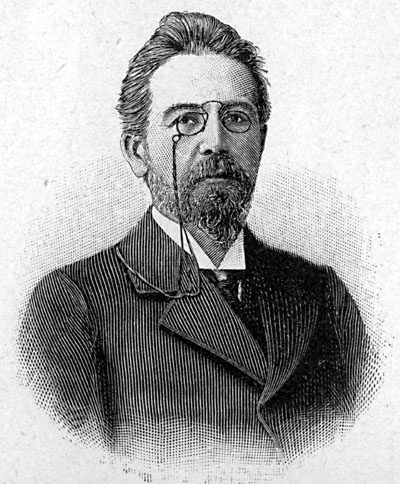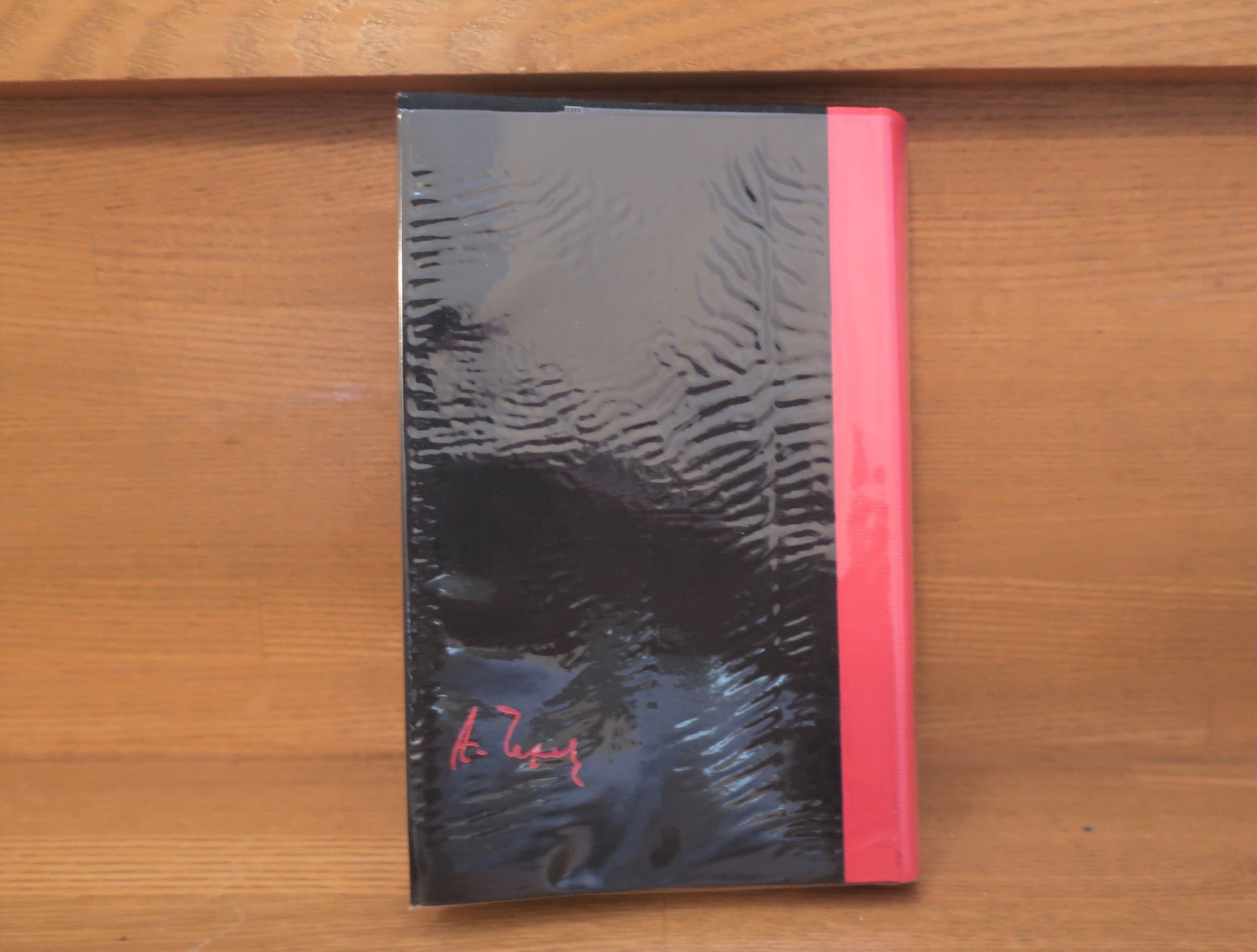Chekhov's "The Lights" Synopsis Commentary - Confrontation with Schopenhauerian Pessimism

Chekhov (1860-1904)Wikipedia.
The Lamplight is a medium-length novel published by Chekhov in 1888.
I read "Tomoshibi" in "The Complete Works of Chekhov 8" translated by Kiyoshi Kaminishi, Kentaro Ikeda, and Takuya Hara, published by Chuokoron-sha.
Let's take a quick look at the synopsis.
The narrator is set up as a man who happens to wander onto a railroad construction site. Night, levees, a whisper, and the barking of a dog. A railroad construction site in Barracks. The "I" (the narrator), who has lost his way here, listens to the questions and answers between Ananiyev, an engineer, and von Sittenberg, a part-time student, and ponders his life as if it were his own, and not just someone else's. The narrator, as a student and an engineer, is the one who is told that he has lost his way. The narrator is supposed to play the role of a referee between the engineer and the student, but he is unable to choose sides. The night is over, and the morning dawns. But "I" only murmurs, "I don't know anything about the world," and remains inconclusive.
Chikuma Shobo, Seiro Sato,The World of Chekhov's Art.P133
The setting is a railroad construction site, the most advanced place of capitalist construction. There, "I" meet Ananiev, an engineer, and Sittenberg, a student, and through their questions and answers, contemplate life.
This is a landmark work for anyone interested in Schopenhauer thought.
This is because the theme of this work is the confrontation of Chekhov's style with Schopenhauerian pessimism. Chekhov scholar Seiro Sato states, "The theme of this work is the confrontation between Chekhov's style and Schopenhauer's pessimism.
With this work, Chekhov, who had always written with flair, seriously tackled for the first time the problem of his time, pessimism. By discussing pessimism, Chekhov directly confronts the critical question, "For what purpose do human beings live? What is the purpose of life for a being who is going to die anyway? Was not the Tower of Babylon doomed to perish in the end? What is the value of life in the face of death? The Lights of the Lights" is a work that attempts to answer this question.
Chikuma Shobo, Seiro Sato, The World of Chekhov's Art, p. 132
We have discussed Schopenhauer before on this blog, and the issue still makes a strong impression on us.
Let's take a closer look at this piece.
Ananiev, the engineer, is a broad-shouldered, middle-aged man who is beginning to feel himself "descending into the valley of old age," a quiet, calm, good-natured man with a good heart.
In the evening after a day's work, before going to sleep, he begins to talk about his life. The person he is talking to is Baron von Sittenberg (Mikhail Mikhailovich), a student at the University of Correspondence. He is about twenty-three years old. He is a young man with flaxen hair and a thin beard, of German descent from the Baltic Sea coast.
He drinks beer as if reluctantly, plays arithmetic mechanically, and keeps thinking about something. He has a sunburned, thoughtful look on his face. The young man had recently become obsessed with pessimism.
When you die, everything is nothing. No matter what we do, death awaits us. What is the purpose of human life? Is it for great deeds? How long can any great achievement last? Neither Darwin nor Shakespeare's greatness escaped death. What is the same whether we do anything or nothing?" he thinks.
Quite antipodal to this student, engineer Ananiev stands in affirmation of reality and harbors illusions about the future of mechanical civilization.
How delightful it is to see the work of one's own hands! This time last year, this place was really a bare step. It didn't smell like human beings. And now, look at this, civilization has come in! How wonderful! It really is! You and I both worked on the railroad. In a hundred or two hundred years, after we're dead, good people will be building factories, secondary schools, and hospitals here - filled with machines! Isn't that right?"
As engineers who lived during the period of the rise of capitalism, this was an extremely natural "illusion of civilization. In contrast, the student has a deep-seated understanding of Schopenhauer's philosophy, which was popular at the time.nihilismto compete with it.
I see. Now we have built a railroad and are standing here philosophizing, but in 2,000 years, there will be no trace of this railroad embankment or these people who are now sleeping after hard labor. There will be nothing left. In fact, isn't this a terrible thing!
I used to live in Petersburg, but now I am sitting here in this barrack. I used to live in Petersburg, but now I am sitting here in this barrack. From here, I will go back to Petersburg. And in the spring, I will come back here again. ...... What does this mean? I don't know. I don't know, and no one else does either. So there is nothing to discuss. ......
Unquestionably, Schopenhauer's influence is evident.
Chikuma Shobo, Seiro Sato, The World of Chekhov's Art, p. 133-134
The work is a bit long-winded, but it is a story of two opposing sides of the question and answer.
And there is a very interesting backstory to this work.
That is the relationship between Chekhov and Tolstoy.
Chekhov greatly respected the artist Tolstoy and had a deep relationship with him, actually going back and forth with him until his later years.
Tolstoy was also fascinated by Schopenhauer from around 1869 to the early 1970s. It is said that his fascination with the philosopher gradually led to the publication of Schopenhauer's writings in Russian with Russian translations, which became popular among young people in Russia.
Later, however, Tolstoy moved away from this and became a critic of Schopenhauerian nihilism, which he described in 1889 as follows
Pessimism, especially that of Schopenhauer, always strikes me as sophistry. No, not only that, it even seems foolish. I always like to say to pessimists: 'If the world doesn't please you, stop airing your grievances. Drop that stuff and get out of other people's way.'"
Chikuma Shobo, Seiro Sato, The World of Chekhov's Art, p. 136-137
I think it is a very interesting question how Chekhov, who respected Tolstoy and was influenced by him, read Schopenhauer in the same way and from there became aware of the issues and began to fight against his ideas.
In this sense, "The Lights" is a very important work for understanding Chekhov.
The story is easy to read and concise, as is typical of Chekhov, so it can be read with ease. The number of pages is also compact at about 50 pages, making it easy to read.
I highly recommend this work.
The above is a synopsis of Chekhov's "The Lights" and my thoughts - What does Chekhov think of pessimism and nihilism?" The above is "What does Chekhov think of pessimism and nihilism?
Next Article.
Click here to read the previous article.
Click here for a list of Chekhov's recommended works.
Related Articles





































